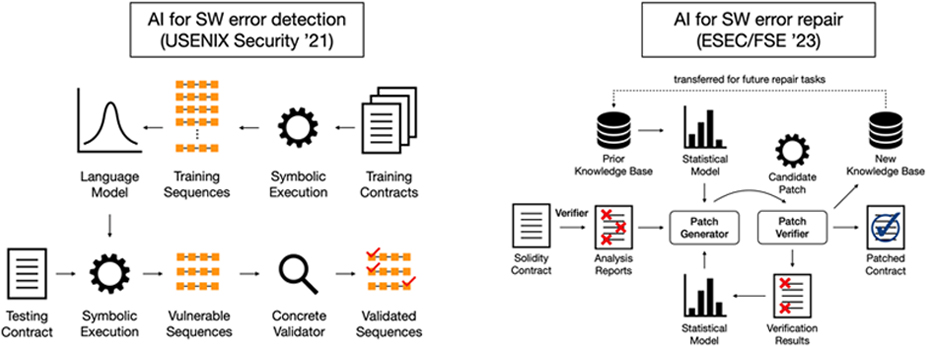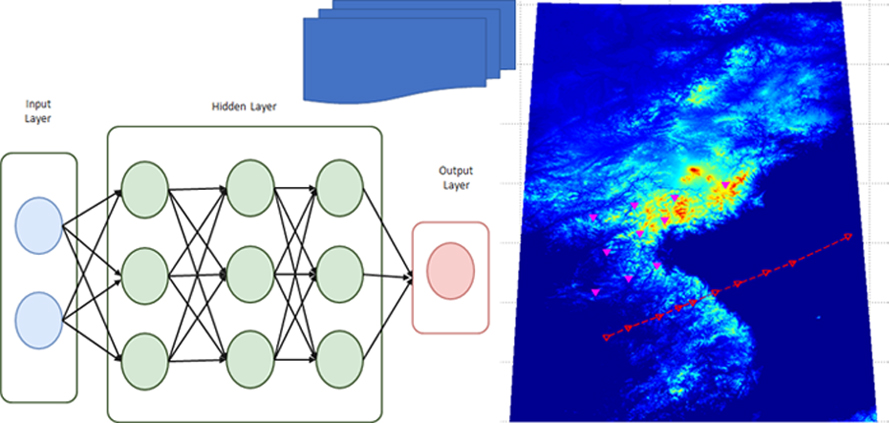Research
AI in EECS
- HOME
- Research
- AI in EECS

Computer and Software Engineering
Our goal is to build a safe and reliable software ecosystem. To this end, we have been researching methods for effectively employing state-of-the-art AI techniques to solve problems in software engineering and software security. Recent examples include techniques for accelerating the detection and repair of software errors. We also have been actively investigating methods for analyzing the safety of AI systems such as autonomous driving software.

Computer and Software Engineering
Our goal is to build a safe and reliable software ecosystem. To this end, we have been researching methods for effectively employing state-of-the-art AI techniques to solve problems in software engineering and software security. Recent examples include techniques for accelerating the detection and repair of software errors. We also have been actively investigating methods for analyzing the safety of AI systems such as autonomous driving software.

Computer and
Software Engineering
Our goal is to build a safe and reliable software ecosystem. To this end, we have been researching methods for effectively employing state-of-the-art AI techniques to solve problems in software engineering and software security. Recent examples include techniques for accelerating the detection and repair of software errors. We also have been actively investigating methods for analyzing the safety of AI systems such as autonomous driving software.

Energy Systems
and Sensors
As artificial intelligence (AI) drives innovation across various domains, the Energy Systems
and Sensors Research Group is actively pursuing the integration of AI into electromagnetic signal
processing and energy systems. Leveraging advanced machine learning techniques, they aim to develop adaptive system operation technologies and intelligent sensors and systems with optimized performance. Key research areas include AI-driven antenna design, AI-based
electromagnetic beamforming and signal processing, intelligent signal processing for cognitive
radio technologies, and AI sensor fusion for enhanced situational awareness, energy demand
and generation forecast, energy price forecast, AI-based power apparatus design.
Through interdisciplinary collaboration and cutting-edge AI methodologies, the group strives to implement new paradigms in wireless communications, radar, and energy management fields.

Circuits
and System
Circuits and artificial intelligence (AI) are closely intertwined in modern technological advancements. AI algorithms require processing large amounts of data, and dedicated hardware accelerators play a crucial role in speeding up AI model training and inference. They are implemented through neuromorphic circuits and optimization of circuit designs directly impact the efficiency and performance of AI models. Furthermore, circuit technology significantly influences the development of AI chips and processors, allowing for the creation of faster and more efficient AI hardware.

Circuits
and System
Circuits and artificial intelligence (AI) are closely intertwined in modern technological advancements. AI algorithms require processing large amounts of data, and dedicated hardware accelerators play a crucial role in speeding up AI model training and inference. They are implemented through neuromorphic circuits and optimization of circuit designs directly impact the efficiency and performance of AI models. Furthermore, circuit technology significantly influences the development of AI chips and processors, allowing for the creation of faster and more efficient AI hardware.

Photonics
and Nanotechnology
The group of Photonics and Nanotechnology utilizes AI to learn the behaviors of photons and waves (electromagnetic and acoustic) in novel structures and devices for developing various applications. Examples include THz communication platforms, metamaterials, optical/acoustical holograms, quantum engineering, optoelectronic devices, phase unwrapping techniques, etc.

